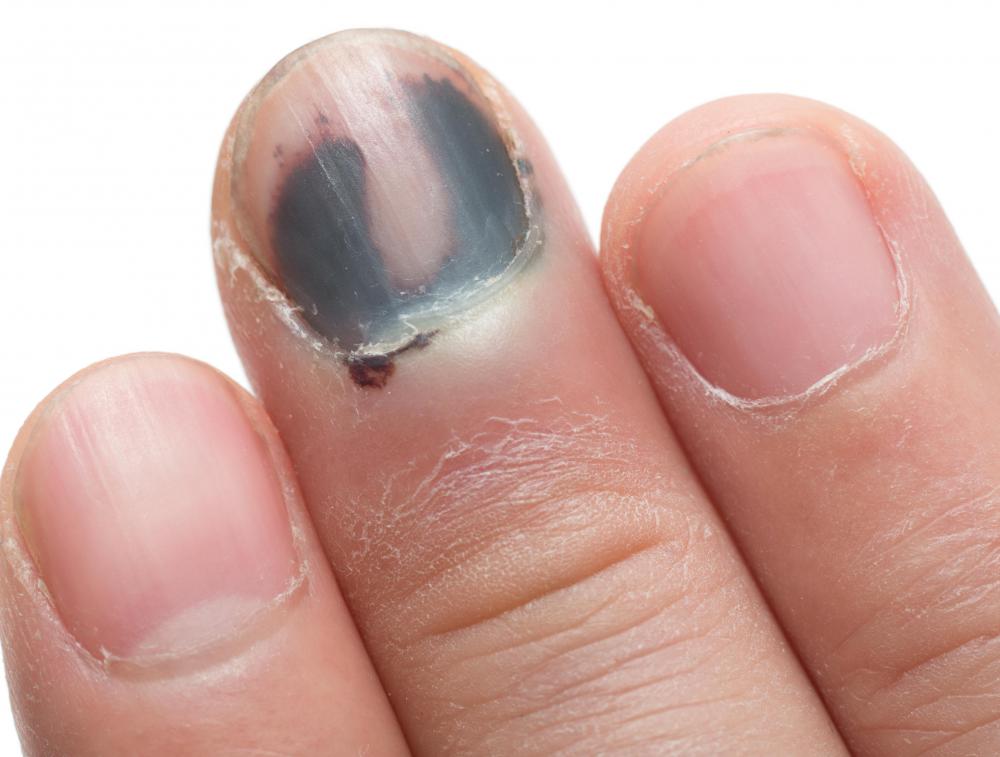At WiseGEEK, we're committed to delivering accurate, trustworthy information. Our expert-authored content is rigorously fact-checked and sourced from credible authorities. Discover how we uphold the highest standards in providing you with reliable knowledge.
What Is DOOR Syndrome?
DOOR Syndrome is a severe but rare genetic disorder. The syndrome is named after its four major symptoms. These are deafness, onychodystrophy, osteodystrophy, and mental retardation. DOOR Syndrome is a recessive trait that is able to be inherited, and most often is detected in children shortly after birth.
Deafness is a major symptom of DOOR syndrome. The hearing loss caused by this syndrome is called "sensorineural," which means that the auditory nerve and inner ear of a patient are not formed correctly. Sensorineural hearing loss is sometimes correctable using hearing aids. Deafness can be permanent in DOOR patients if the auditory nerve is severely deformed.

Another telltale symptom of DOOR is onychodystrophy. This is a condition that causes deformities to the nails on the hands and feet. Nails affected by onychodystrophy may be discolored with a yellowish appearance. Additionally, finger and toe nails of people suffering from DOOR are often very brittle and easily damaged. Severe cases of onychodystrophy caused by DOOR can result in a complete loss of finger or toe nails.

Osteodystrophy is the third major symptom of DOOR syndrome. This condition causes bones to develop improperly. Small bones, such as the fingers, are often misshapen and fail to function properly. Some patients suffering from this have extra non-functioning bones in the thumb and toe areas. Osteodystrophy is extremely debilitating and can affect a patient's ability to walk, stand, and perform basic life skills.
The final symptom that characterizes DOOR syndrome is mental retardation. This can be either mild and manageable, or severe and completely incapacitating. Mental retardation limits cognitive ability and makes it very difficult for patients to function during everyday life. Typically, this condition limits language development, memory, and problem solving skills.
Very little is known about the causes and treatment of DOOR syndrome as of 2011. The syndrome is genetically classified as an autosomal recessive trait. Two copies of a mutated gene are required in order for DOOR to be present in an individual. A parent can carry the gene causing DOOR syndrome without suffering from the disorder themselves.
Generally, care for DOOR patients involves managing the individual physical symptoms. This can entail using tools to improve quality of life such as hearing aids and wheelchairs. Advances in the understanding and acceptance of mental disorders and other symptoms caused by DOOR often allow patients to receive education and social exposure despite these disabilities.
AS FEATURED ON:
AS FEATURED ON:












Discuss this Article
Post your comments